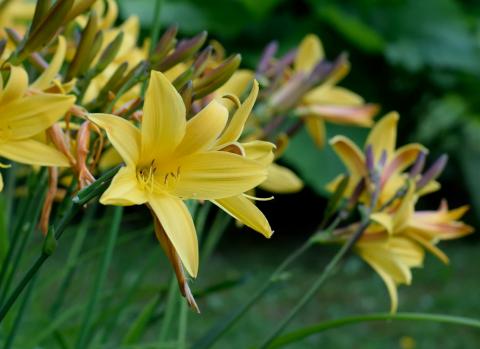
Daylilies are plants that both new and seasoned gardeners can appreciate alike. They require very little special attention and are happy growing in almost any sunny location, from rich, damp soils to sandy, well-drained. Plants will thrive with very little supplemental irrigation or fertilizer, and many cultivars are hardy to Zone 3. Daylilies also come in a wide variety of colors that fit into almost any landscape, including white, pink, red, purple, yellow, and orange, with every possible combination of each. Perhaps best of all, problems with insects and diseases are practically unheard of. Deer occasionally become a nuisance when they nibble on early spring foliage and eat tender flower buds.
Depending on the cultivar, daylilies will bloom from May through late September. By combining a number of daylilies with different bloom times, it’s possible to have flowers nearly the entire growing season. As their name suggests, the flowers of daylilies last just one day, but healthy plants can produce many weeks of blossoms.
Whether or not daylilies should be deadheaded is partially an aesthetic question. Spent daylily flowers are rather unappealing. After they fade they quickly turn to mush, occasionally drying onto undeveloped buds, preventing them from fully opening. Flowers that are successfully pollinated form seed pods. Most flowering plants, including daylilies, expend a tremendous amount of energy on seed production. Seed production in turn takes away from root and shoot development and future flowering potential. From a plant health perspective, seed pods should be removed so that daylilies will produce more flowers next season.
Deadheading daylilies isn’t difficult, only time consuming. Don’t feel like you have to deadhead your daylilies every day. Deadheading plants at least a few times throughout their bloom period should be enough to keep them from spending energy on developing mature seed. When plants are in full bloom, all you need to do is snap off the spent flower heads and seed pods with your fingers. Once there are no longer any blooms, flower stalks can be cut to the base with hand pruners.
Got questions? The Ask UNH Extension Infoline offers practical help finding answers for your home, yard, and garden questions. Call toll free at 1-877-398-4769, Monday to Friday, 9 a.m. to 2 p.m., or e-mail us at answers@unh.edu.

